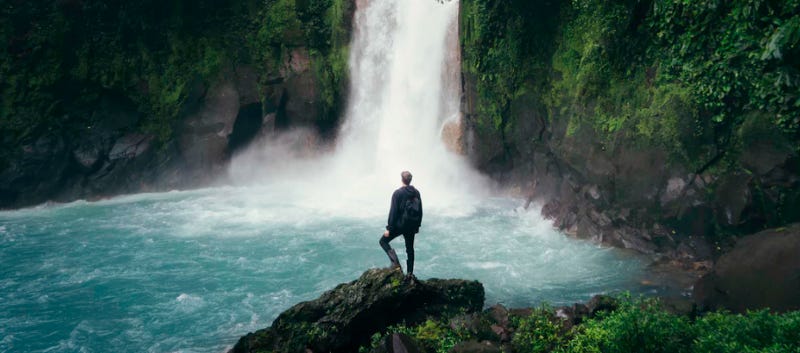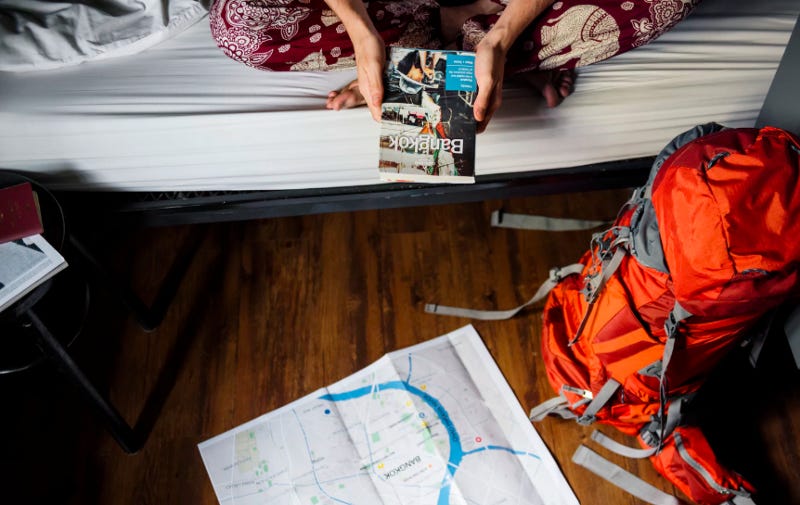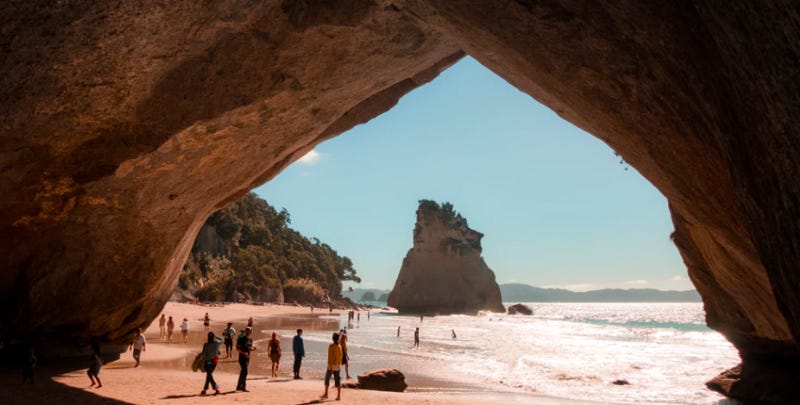Notes on startups building for travel
I recently evaluated a few travel/experience oriented startups. Below are some of my notes, thoughts, and remaining questions about this…
I recently evaluated a few travel/experience oriented startups. Below are some of my notes, thoughts, and remaining questions about this sector.
Why tourism is an interesting segment
As it turns out, tourism is big, fast-changing, and completely dominates some regional economies. It is interesting to observe the same patterns play out for several segments within the tourism industry as digital newcomers deploy competing strategies, each vying for a piece of the global-travel-spend pie. Global tourism is a $1.5T (yes, T for trillion) industry that has an immeasurable number of second order effects.
Some regional economies are completely dependent on revenue generated from tourism.
The U.S. state of Hawaii is a great example: The largest single contributor to the state’s gross domestic product is tourism, representing about 25 percent of its entire economy. Visitors spend nearly $20B each year and directly support 200,000 jobs. Of course, the secondary effects of these dollars support countless homes, families, and hyperlocal economies around the islands.
Another example: The island of Macau is situated on the south coast of China, across the Pearl River Delta from Hong Kong. Annually, tourism dollars equate to $14B in revenue, making up 30% of annual GDP. This type of undiversified economic reliance on tourism can be high risk in the face of a rapidly changing travel environment.
Travel industry revenue is made up of several segments
Transport (more broadly, mobility)
Lodging
Experiences (can include a variety of activities: dining, outdoor, entertainment, historical etc)
Unraveling the travel agency
In the early 2000s, enabled by information accessibility, tourism was completely transformed. Naturally, the travel economy shifted away from the agency model because the consumer could digitally access more information, compare pricing, and independently book all components of a trip.
This unbundling of tourism began with the rise of several infrastructural platforms including Where 2 Technologies (Google Maps), Booking API, Orbitz, and Paypal. Each of those companies (aside from Paypal) had democratized information which, when previously opaque, was wielded to command premiums by travel agencies. Other aggregators would come along, including Expedia, Kayak, Yelp, and TripAdvisor which succeeded using data aggregation, crowd-sourcing, and bundling strategies.
Changes in behavior
A significant shift in consumer behavior means that previously successful business models may no longer apply.
In 2003, early into the great travel agency unbundling, hospitality scholars suggested that “‘…changing demographics and lifestyles have resulted in greater demand for choice and flexibility in vacations. Thus, we see a growing group of new tourists, “consumers who are flexible, independent, and experienced travelers, whose values and lifestyle are different from those of the mass tourists”’ [source]
Over the last 15 years, that trend has accelerated, spurred by 3 changes.
Permeation of infrastructure (enabled by mobility and lodging platforms)
The commodification of trust
The mimetic desire to seek and share new experiences
An increase in available infrastructure
A few years after the rise of data aggregators, folks like Brian Chesky and John Zimmer figured out that while existing infrastructure might be limited, there are a significant number of underutilized assets in the world that can be transformed into revenue-generating businesses. By commodifying trust and packaging it into 5-star ratings, a new age of tech companies was born: Lyft, Uber, JetSmarter etc. Similarly, budget airline operators like EasyJet, Frontier, RyanAir, utilized secondary metropolitan hubs in order to drive margin and pass value onto customers. Airbnb, Booking.com and HostelWorld enabled new types of low-cost lodging by squeezing margin out of assets that weren’t previously included in the lodging market i.e. “making hosts out of homeowners”. Value could be extracted from all types of infrastructure. (Yes, this topic has indeed been exhaustively covered by every tech writer and their mother.)
More importantly, second-order effects of this unlocked value meant a significantly more expansive and permeating infrastructure, inviting overlooked geographies to quickly stand up tourism economies. Further, new platforms like Airbnb Experiences allow locals to stand up experiential offerings, fully unlocking the potential of human-capital-driven services. Now, nearly every corner of the world has the capacity to become the next “top destination of the year”. Any local economy can mobilize and market an ecosystem of mobility, lodging, and services using existing platforms.
Commodification of trust
Infrastructure is nothing without the implication of trust and safety. For a leisure-driven traveler, security and reliability are as important as the fluidity of travel itself. Thus, the travel agent served a critical role, not only as an organizer but as an insurer of safe passage. That fulfillment of trust is now served by a 5-star rating and a “2,000 trips completed” tag in your app.
Plenty of good writing on trust already exists: See this article written by Riley Newman and Judd Antin.
Building for Trust
Insights from our efforts to distill the fuel for the sharing economymedium.com
And a great article critiquing Airbnb’s trust model written by Nathan Kinch :
Here’s what AirBnB missed when designing for trust
Much has been written about AirBnB’s focus on trust and how to design for it. Although this post will touch on some of…medium.com
Mimetic Nature of Travel
Travel trends show that consumers increasingly turn to mobile to get itinerary ideas, compare flight fares, or reserve experiences. These moments are made up of many micro-moments: decision points when a well-positioned brand or influencer can pressure a consumer. As marketers have found, the path of the customer journey, from discovery to booking is significantly different than retail.
In many cases, influencers act as the top-of-the-funnel for the discovery of new destinations. Several interesting data points:
87% of millennials said they use Instagram or Pinterest for travel inspiration. [source]
69% of Pinterest users use the platform to discover travel services when deciding what to book. [source]
Beyond *being influenced*, more than 40% of millennials aged 18 through 33 consider “Instagrammability” when selecting their next travel destination. [source] This means digitally active individuals seek to use travel as a means to increase their own social clout.
These data points do not only suggest that influencers will play a significant role in travel economies. More interesting, I believe, is that in order to maintain clout, influencers (and those trying to experience upward mobility among the digital strata) must constantly be on the search for the “next new thing”. In order to retain the attention of viewers, social media lords must travel to the ends of the earth to find nuanced, unique experiences. Thus, influencers are like the truffle pigs of new experiences, endlessly engaging in mimetic rivalry to hold the ephemeral spotlight. If these assumptions are true and new demand will exist for hip offerings, we can expect a lot more $ going into things like this:
Thus, influencers are like the truffle pigs of new experiences, endlessly engaging in mimetic rivalry to hold an ephemeral spotlight.
Lake Wanaka
Lake Wanaka, a small town in New Zealand’s South Island, is a great example of one of the first “Instagram Destinations”. A large proportion of its popularity is owed to the influencers that publicized the region through Instagram in 2015.
The social media influencers that partnered with Lake Wanaka exposed their followers to their experiences with the town’s beautiful setting, resulting in a 14 percent annual increase in tourism and proving that the reach and engagement capacity of influencers can and should be leveraged to cultivate interest in a given destination or set of activities. [source]
Conclusions
As these trends converge, it will be interesting to see how trends play out. Several unanswered questions remain.
In a world where everything is shared, which assets retain value and appreciate?
Could a REIT or major developer increase portfolio value by simply standing up a lightweight tourist economy in a particular geography?
Will Airbnb Experiences be the final solution for experience providers or simply a marketing channel?
Sizzle vs steak: How engaging do experiences have to be if they still score highly in “Instagrammability”?
I’d love to hear your thoughts on this topic. Feel free to reach out at amrit[@]technexus.com





